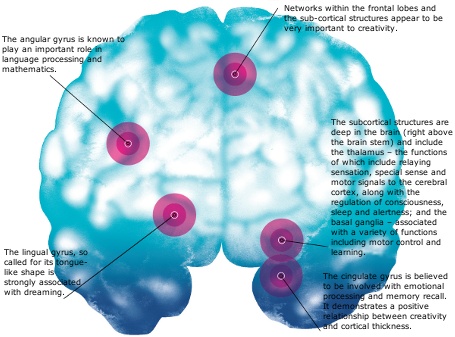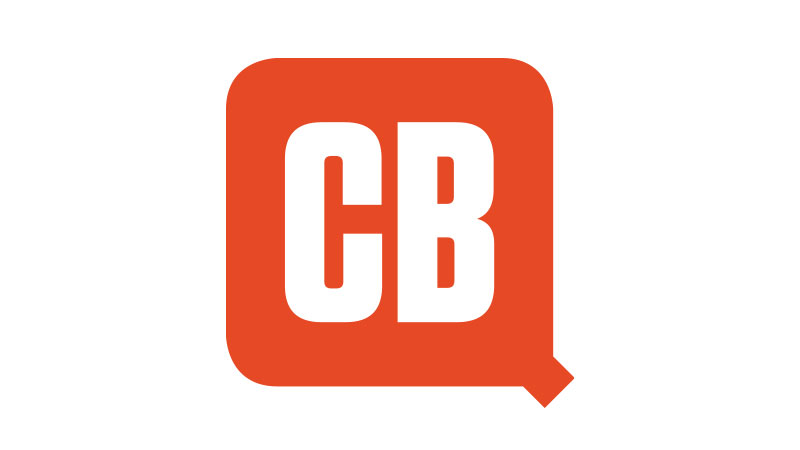The science behind great ideas
Mark Penfold discovers how you can ride your brain waves to new levels of creativity.
If we imagine intelligence and creativity as two different kinds of software, their varying system requirements make for interesting reading. Intelligence, as you might expect, works best on an array of liquid-cooled super computers. Creativity, on the other hand, is happiest with an old Atari, some string and a couple of scratch cards. It might be an extremely unscientific example, but it is one that explains what modern neuroscience has discovered about the brain and creativity.
Rex Jung is a neuroscientist at the University of New Mexico. His work - following 15 years of research into the physical basis for intelligence - examines what happens in the brain when we are being creative. "Less is more," when it comes to creativity, says Jung. "Lower levels of particular chemicals, lower levels of cortical thickness in regions of the frontal lobe and lower integrity in white matter structures - these are all associated with better scores on our measure of creativity."
The direct opposite is true of intelligence. When you're trying to identify a smart brain, says Jung, "More is invariably better. Cortical thickness is almost always associated with intelligence." It would seem that creative thinking thrives in a very different environment to intelligence.
Jung is a neophrenologist - that is, a member of the new school of neuroscience that has moved away from the idea that certain areas of the brain are responsible for particular tasks. Today the talk is of networks, nodes and the integrity of connections. However, it's still thought that specific areas of the brain are important for a given type of thought. "Networks within the frontal lobes and the sub-cortical structures appear to be very important to creativity," notes Jung. But that isn't the end of the story, because the same areas may be central to other functions too.
The picture that has emerged shows the brain to be ever-changing; constantly forming and breaking connections to build new network configurations. The physical set-up of each brain plays a part in deciding which types of network are most effectively reproduced. What the contrast between intelligence and creativity seems to tell us is that creative - or 'generative' - thought requires a network that can manage a degree of unreliability; a sort of 'fuzzy logic' where unsuspected connections and illogical conclusions are given a chance to bear fruit. Creativity needs a certain amount of 'noise'.
But how does any of this help? Well, because the brain is a dynamic thing, we have a means to mould it to our needs. Neuroscience even suggests a mechanism: practice. "We had people play Tetris for three months," says Jung. "We found that over that period their brain structure changed." And even creativity can be honed by practice. So, what are you waiting for?
Ideas matter
Picking apart the power of your brain
Daily design news, reviews, how-tos and more, as picked by the editors.

Five ways to generate better ideas
01 Chill out
Creativity doesn't respond well to high-pressure situations, because the brain has a tendency to reach for its analytical tools when the going gets tough. So, if you need to produce something novel, remember that the magic is more likely to show itself in a relaxed atmosphere - think of Archimedes in his bath, or Beethoven's country strolls. These stories are anecdotal but seem to be borne out by research.
02 Change something
Generative thought, or creative thinking, can easily hit a dry patch, but research at the University of Bristol suggests that the solution could be as simple as a change of scene. So if you're experiencing the design equivalent of writer's block, don't worry - just relocate to the park and see how that works. If it doesn't, maybe the Hare and Hounds would be more conducive?
03 Get the blues
Research carried out at the University of British Columbia in Vancouver has shown that colour can have effect on mental state. Red appears to sharpen memory recall while blue has a noticeable effect on creativity. The subjects involved simply had their computer display set to the relevant colour. Imagine what you could do if you painted the whole studio.
04 Mirror, mirror
They say that emulation is the sincerest form of flattery. Well, it may also be the best way to learn how to create. Though not fully understood, mirror neurons are brain structures that light up when we watch someone else performing a task just as if we were doing the same thing ourselves. Neuroscience has postulated mirror neuron involvement in many central tasks, among them language acquisition. So why not creativity?
05 Mix it up
It has long been known that a little randomness can go a long way. The mind can be provoked into a more creative way of thinking by having to forge connections between unrelated objects. It likes to be gradually eased into things, too, so a few rounds of Call My Bluff before you settle down to work could be just what you need to get those juices flowing.

The Creative Bloq team is made up of a group of art and design enthusiasts, and has changed and evolved since Creative Bloq began back in 2012. The current website team consists of eight full-time members of staff: Editor Georgia Coggan, Deputy Editor Rosie Hilder, Ecommerce Editor Beren Neale, Senior News Editor Daniel Piper, Editor, Digital Art and 3D Ian Dean, Tech Reviews Editor Erlingur Einarsson, Ecommerce Writer Beth Nicholls and Staff Writer Natalie Fear, as well as a roster of freelancers from around the world. The ImagineFX magazine team also pitch in, ensuring that content from leading digital art publication ImagineFX is represented on Creative Bloq.
